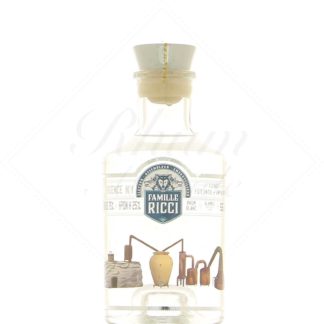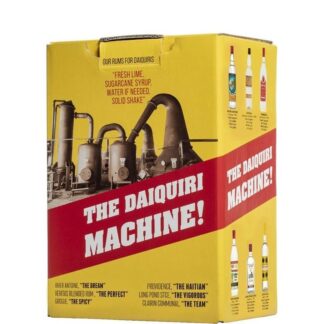Grogue
The history of grogue
Sugar cane first appeared in Cape Verde around 1490, when Portugal decided to cultivate it in its possessions off the African coast. The first distillations of cane juice soon followed, and the first traces of them can be found in 1504. These eaux-de-vie were not yet called grogue, but aguardente de cana sacarina.
A small sugar industry developed over the following decades. Then, in the 17th century, aguardente was used as a currency of exchange with African chiefs. However, it suffered from competition from Brazil and Madeira, and sugarcane cultivation tended to decline.
However, the staple was also appreciated by the British navy, who were often passing through, and regularly took some with them to make their famous "Navy Rum". It was in contact with English sailors that it took on the name "grogue", in a sort of confusion with the drink created by Admiral Vernon.
In 1832, the port of Mindelo, on the island of São Vicente, underwent a major redevelopment. It became a hub of international trade, with many ships calling. While the sailors of good society preferred whisky and brandies, the dockworkers and small staff enjoyed grogue.
In 1866, a law was introduced to tax toddy, with the aim of capitalizing on this success, but also in an attempt to regulate the sometimes excessive consumption. This attempt was not very successful. In 1941, there was even an attempt to ban toddy through a new law. This was only half-implemented, and led to even more harmful smuggling.
A truly national drink
In Cape Verde, grogue has become the traditional drink par excellence. Consumed during religious celebrations and family gatherings, it is above all a festive drink.
By the early 2000s, tourism was booming and the Cape Verdean diaspora was enjoying the unique taste of their island. Demand for grogue is on the upswing, and sugarcane cultivation is on the up again. However, this is not always enough, and the lure of profit pushes some producers to distill imported sugar. As a result, the quality of toddy drops significantly. Its consumption even becomes potentially dangerous, as the rules of production are sacrificed in favor of profit.
This led to the creation of the Confrérie du Grogue de Santo Antão (CONGROG) in 2008. The association aims to promote Cape Verde's national drink, notably by banning grogue made from sugar. It also promotes sound methods for distilling a healthy, high-quality product.
Thanks to efforts to raise awareness among the authorities and producers, it obtained a law dated August 12, 2015. The production of grogue is now supervised and controlled, in order to offer a certified product that can be marketed outside the archipelago.
The production of toddy
The archipelago's main grogue-producing island is Santo Antão. Here, sugarcane accounts for around three-quarters of cultivated land. Grogue is also produced on Santiago, and to a lesser extent on São Nicolau, Maio and Brava. Cape Verde is a volcanic, mountainous archipelago, so plots are small and often terraced. Harvesting is therefore always done by hand, as mechanization is impossible.
The most common cane varieties are Preta, a red and black cane, Bourbon, and Riscada, a striped cane. They are grown naturally, without fertilizers or pesticides.
Harvesting takes place between January and July, and the cane is transported on foot to the "trapiche" (the mill where the cane is pressed). Pressing is done without water, and without even rinsing the cane. The bagasse ("Bagaço") is dried and later used as fuel for the still. Some trapiches are electrified, but many still use mules or oxen to power them.
Fermentation and distillation
Pure cane juice in fermentation is called "calda". Fermentation takes place without the addition of yeast or acidification, and is wild and spontaneous. It lasts an average of 8 to 12 days, and can sometimes extend to 4 or 6 weeks, depending on weather conditions and the nature of the cane. It takes place in open containers, which collect the yeasts and bacteria present in the environment. This is a pure local rum.
Distillation is carried out in iron stills, in conditions close to those of the early days of rum. There's only one boilermaker on the whole archipelago, so all the stills are pretty much the same, only their capacity may vary. The calda is distilled a first time, then the second pass is made up of the brouillis (result of the first pass) to which is added a new portion of "fresh" calda.
Grogue flows at around 50% alcohol, much lower than most other rums in the world. As a result, the reduction required is also very low, so that grogue retains all its aromatic power.
Some distillates are aged to make "grogue velha", but the vast majority is consumed as is, and very locally.
Some brands of toddy are available in France
There are over 800 trapiches in Santo Antão alone, but only a tiny proportion of the grogue is exported. Guillaume Ferroni, a great grogue enthusiast, has been to Cape Verde many times. He distributes brandies from the Tarrafal region, bottled under the Musica & Grogue brand. He has also selected grogues from the same group of producers, which he has blended and bottled under the Vulcão brand.
Luca Gargano, another great enthusiast and traveler, has turned his attention to the island of Santiago. He imports Barbosa Amado & Vicente through his company Velier. Read less













